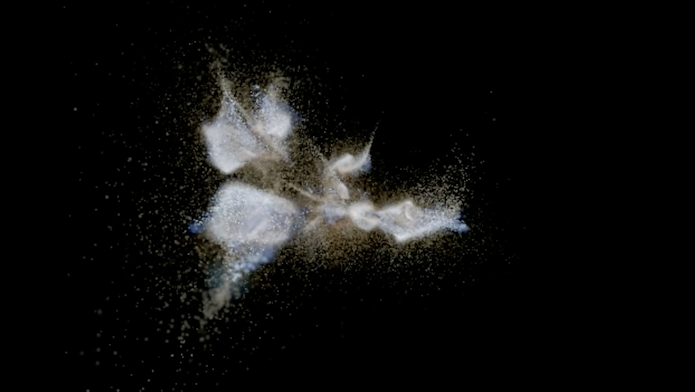Watch: When Galaxies Collide

By clicking to watch this video, you agree to our privacy policy.
Galaxy clusters, collections of hundreds to thousands of galaxies bound together by gravity, are an intense subject of study by astrophysicists. At the Flatiron Institute’s Center for Computational Astrophysics (CCA), scientists are working to understand the underlying physics that drives galaxy cluster formation.
Recently, two powerful telescopes, the South Pole Telescope and the Atacama Large Millimeter Array, uncovered a very surprising system dating to about 1.4 billion years after the Big Bang that has provided some much-needed clues about the early stages of galaxy cluster formation: 14 galaxies packed tightly together in a region of space measuring just three times the size of our own Milky Way galaxy. Scientists named the cluster SPT2349-56.
Here, CCA astrophysicist Chris Hayward explains how he and his team developed a simulation to visualize SPT2349-56’s behavior and predict how the cluster would evolve with time. Armed with powerful supercomputers and observational telescope data, they solved complex mathematical equations that describe the key physical processes of galaxy formation. Using a process called radiative transfer, they computed synthetic images of the simulated galaxy. The results of these calculations are images that resemble what we would see if we could view the simulated galaxies through a telescope such as Hubble.
Simulations such as this give researchers a never-before-seen window into the early days of the universe and are a critical tool to more deeply understand the past, present and future behavior of galaxies. As scientists continue to study SPT2349-56 and other galaxy systems like it, they hope to develop more robust and more precise simulations that bring these and other components of the vast expanse of our universe to life.
For deeper reading:
Rennehan, D., Babul, A., Hayward, C.C., et al. 2020 Rapid early coeval star formation and assembly of the most-massive galaxies in the Universe, Monthly Notices of the Royal Astronomical Society, 493 (4), 4607–4621.
Miller, T.B., Chapman, S.C., Aravena, M. et al. 2018 A massive core for a cluster of galaxies at a redshift of 4.3. Nature 556, 469–472.
This video is part of Visualizing Science, a series of short, explanatory videos featuring scientific visualizations and computational models — narrated by the scientists who created them.